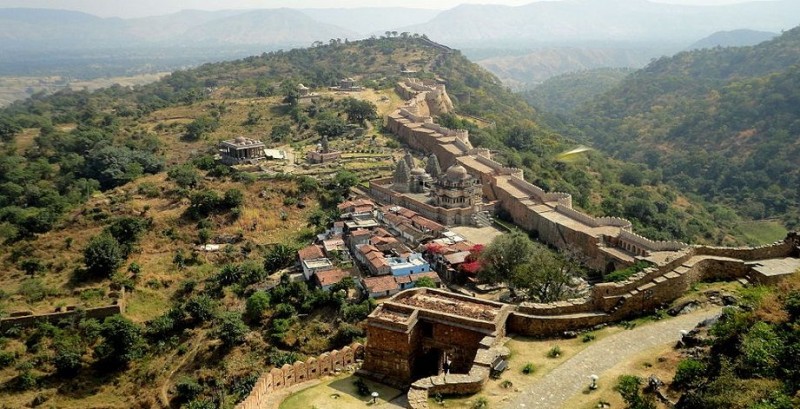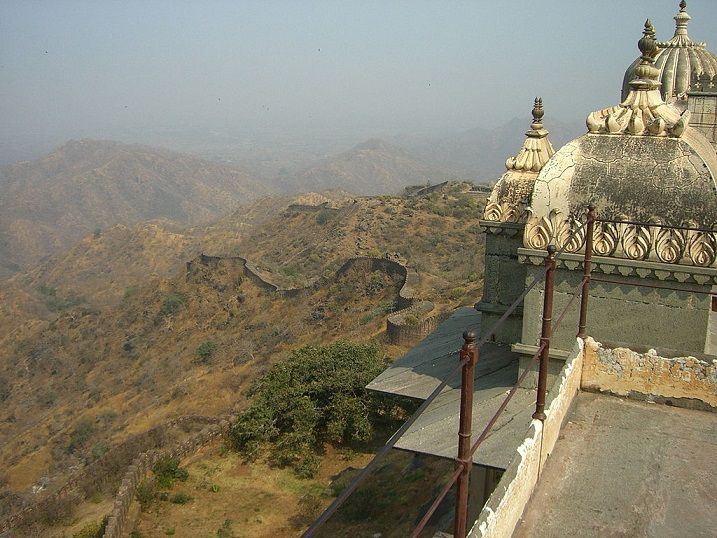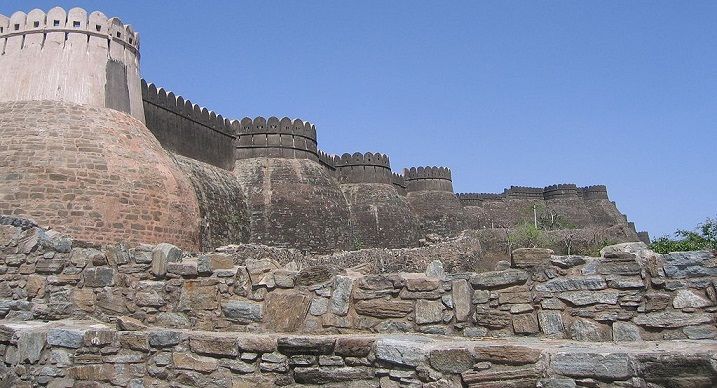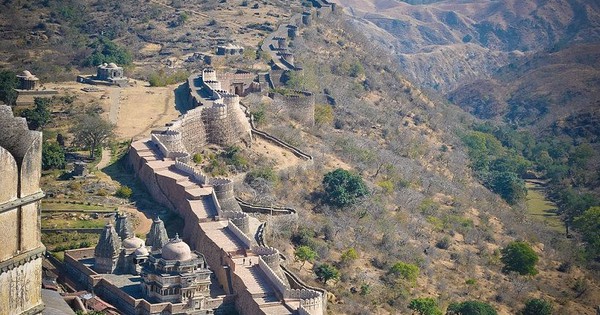The Magnificent Kumbhalgarh Fort in India
Imagine standing atop a high mountain, 1,100 meters (3,600 feet) above sea level, gazing at a wall that stretches over 36 kilometers (22 miles) around a majestic fortress. This is the awe-inspiring Kumbhalgarh Fort, often referred to as the “Great Wall of India.” It is the second-longest continuous wall in the world, following the Great Wall of China.
A Testament to India’s Rajput Dynasty
Built in the 15th century by King Rana Kumbha, the Kumbhalgarh Fort showcases the grandeur and architectural brilliance of the Rajput era. Despite being over 700 years old, the fort remains remarkably intact and well-preserved. In fact, it was recognized as a UNESCO World Heritage Site in 2013.

Caption: The construction of this fortified wall began in the 15th century by King Rana Kumbha. Today, Kumbhalgarh is still a hidden gem, known for its grandeur and stunning architecture.
Nestled in the Heart of Rajasthan
Located in southern Rajasthan, western India, the kingdom of Mewar, under the rule of Rana Kumbha, once stretched from Ranthambore to Gwalior, encompassing vast territories that now belong to Rajasthan and Madhya Pradesh. Among the 84 fortresses under their dominion, Rana Kumbha is credited with designing 32 of them, including the magnificent Kumbhalgarh Fort – the largest and most intricate of them all. It was built as a sanctuary for the rulers of Mewar during times of conflict.
The massive wall encircling the fort was constructed to safeguard it from invasions, winding its way through valleys and along mountaintops. While appearing thin at certain points, the walls are wide, measuring over 15 feet in some places, and are exquisitely built with thousands of stone bricks and intricate decorative patterns.

Caption: The Kumbhalgarh Fort is an ancient fortification surrounded by massive walls, perched atop a hill, providing a strategic vantage point to observe any unusual activities from a distance. It features a total of seven gates strategically positioned around the fort walls.
The fort is also protected by 13 mountain peaks belonging to the Aravalli range. Visitors can enter the fortress through any of the seven gates named Aret Pole, Hanuman Pole, Ram Pole, Vijay Pole, Nimboo Pole, and Bhairon Pole.
Within the fort complex, more than 360 temples are safeguarded. Around sixty of them are Hindu temples, while the rest belong to the Jain community.
Legend has it that during the reign of Rana Kumbha, the walls were adorned with numerous lanterns, consuming approximately 50 kilograms (110 pounds) of buffalo tallow and 100 kilograms (220 pounds) of cotton to illuminate the valley for farmers working through the night.

Caption: According to Narayan Vyas, an archaeologist who conducted several surveys on fort walls between Bhopal and Jabalpur, these ancient ruins and fortifications might be larger than previously documented by historians.
The Palace in the Clouds and Its Rich History
The fort is renowned for its magnificent palace nestled atop the architectural marvel. This palace, known as “Badal Mahal” or the “Palace in the Clouds,” is not only a stunning structure but is also believed to be the birthplace of the great warrior Maharana Pratap, one of Mewar’s most illustrious kings.
Historical records suggest that the construction of the Kumbhalgarh Fort dates back to the 2nd century during the Mauryan era of ancient India. However, despite its size and historical significance, the Kumbhalgarh Fort remains relatively unknown outside the region.

Caption: Though construction began in the 15th century, Kumbhalgarh continued to be expanded and perfected until the 19th century. While there are still many mysteries and lively debates among historians, the local people take great pride in this monumental and exquisitely designed structure.
In June 2013, the fortress was included in UNESCO’s World Heritage List along with five other hill forts of Rajasthan.
Today, the fort remains open to the public and offers panoramic views of the surrounding rural landscapes. From its highest point, visitors can marvel at the stunning fort walls amidst the Aravalli mountain range. The sandy dunes of the Thar Desert are also visible from certain parts of the fort.
Tourists are advised against exploring certain less frequented areas of the walls, as ancient traps and defense mechanisms, although mostly deactivated, may still exist in remote locations. Those who wish to venture deep into this historical monument are cautioned about the potential risks.
The Kumbhalgarh Fort stands as a testament to India’s rich history and architectural grandeur. Though less renowned than some other magnificent forts, it never fails to captivate with its awe-inspiring size, intricate design, and picturesque setting.

